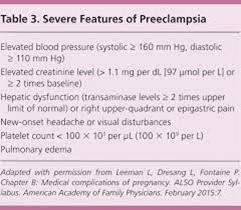A nurse is assessing a school-age child who has Down syndrome. For which of the following findings should the nurse notify the provider?
Sparse eyelashes
Reports cracked skin on feet
Reports persistent neck pain
Hyperflexibility
The Correct Answer is C
Choice A rationale:
Sparse eyelashes are a common physical characteristic of individuals with Down syndrome and do not typically require immediate notification of the provider.
Choice B rationale:
Cracked skin on feet is not uncommon, and while it may need attention, it does not generally require immediate notification of the provider.
Choice C rationale:
Persistent neck pain in a child with Down syndrome could indicate an underlying issue and should be reported for further evaluation.
Choice D rationale:
Hyperflexibility is a common feature of Down syndrome and does not typically require immediate notification of the provider.
Nursing Test Bank
Naxlex Comprehensive Predictor Exams
Related Questions
Correct Answer is C
Explanation
Choice A rationale:
Ankle swelling can be a common symptom of pregnancy and is not necessarily indicative of a complication.
Choice B rationale:
Gums can become more sensitive during pregnancy, leading to bleeding while brushing teeth. This finding is common and not necessarily indicative of a complication.
Choice C rationale:
Constant pain in the middle of the upper abdomen can be a sign of preeclampsia, a serious pregnancy complication that requires prompt medical attention.
Choice D rationale:
Feeling dizzy when lying flat on the back (supine hypotension) can be a common discomfort during pregnancy due to pressure on the vena cava. However, it does not necessarily indicate a complication in this context.

Correct Answer is D
Explanation
Choice A rationale:
An adventitious crisis is a crisis resulting from an external event such as a natural disaster or crime.
Choice B rationale:
Psychopathologic crises involve individuals with preexisting mental health conditions experiencing acute exacerbations.
Choice C rationale:
A psychiatric emergency involves a sudden onset of severe behavioral symptoms that require immediate intervention.
Choice D rationale:
A situational crisis arises from an unexpected life event, such as injury, illness, or loss of independence, which can disrupt a person's normal routine and coping mechanisms.
Whether you are a student looking to ace your exams or a practicing nurse seeking to enhance your expertise , our nursing education contents will empower you with the confidence and competence to make a difference in the lives of patients and become a respected leader in the healthcare field.
Visit Naxlex, invest in your future and unlock endless possibilities with our unparalleled nursing education contents today
Report Wrong Answer on the Current Question
Do you disagree with the answer? If yes, what is your expected answer? Explain.
Kindly be descriptive with the issue you are facing.
